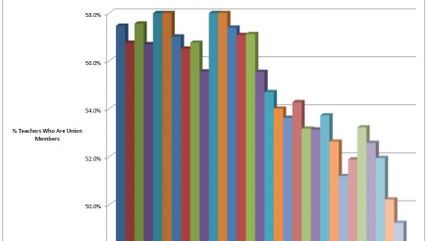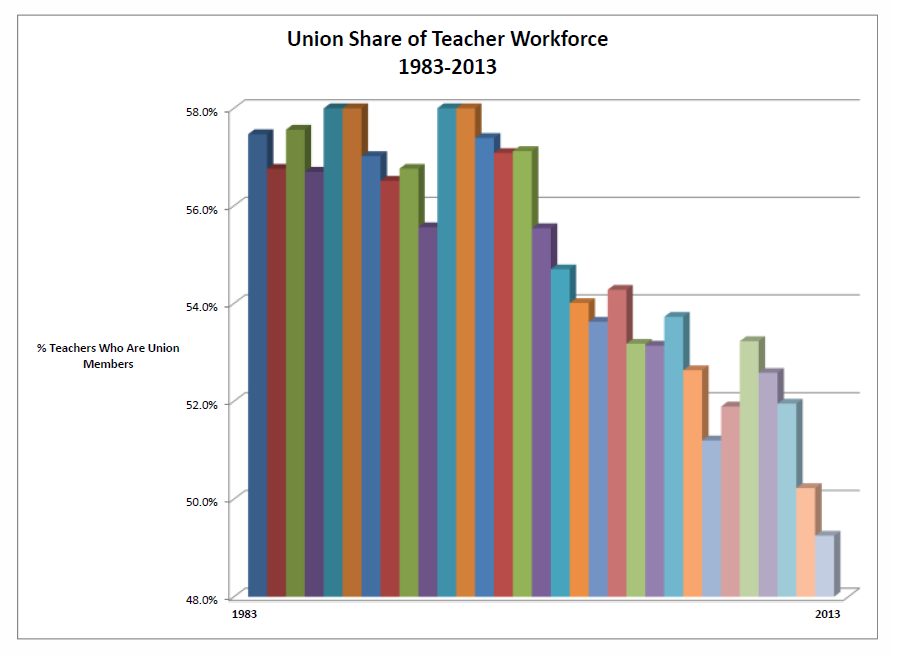Teacher Membership in Unions Drops Below 50 Percent
Will they be joining other unions in membership decline?

At Education Intelligence Agency, a site devoted to tracking behavior by teachers' unions, Mike Antonucci looks at how union membership has paced with the growth in the number of educators. It turns out, particularly over the past 15 years, it hasn't been going so well for the unions. Even though the number of educators has increased, membership in unions did not at the same pace. As a result, the percentage of teachers who belong to unions has dropped. Antonucci notes:
BLS began tracking union data in 1983. That year there were more than 2.6 million people employed as primary, secondary and special education teachers in both public and private schools. More than 1.5 million of them were union members, for a unionization rate of 57.5 percent.
By 1995 there were 600,000 more teachers, but the unionization rate was virtually identical. In the 18 years since, the rate has never approached that height again.
In fact, while America's schools added almost a million and a quarter new teachers, teachers' unions added fewer than 345,000 new members, for a rate of 27.8 percent.
In 2013, the percentage of educators who belong to teachers unions dipped below 50 percent for the first time since BLS has been monitoring the data:

To be fair about the chart and to the unions, it's not quite as big a drop as it looks at first glance. The distance between the top and the bottom of the chart is only 10 percentage points, not 100 to 0.
Nevertheless, it could be an indicator of decreasing influence by the unions. Over at the Sacramento Bee, columnist Dan Walters notes the decrease in union power over the control of the future of the California school system:
The most public example is the complex, multifront battle that pits the state's union-dominated education establishment against civil rights and reform groups over the direction of public schools. It's essentially a Democrat vs. Democrat battle, waged within big-city school boards, in the Legislature, in the state Board of Education and in the courts.
The establishment contends that the schools' shortcomings can be solved with more money – a lot more money. The California Teachers Association-led Education Coalition reiterated this month that it wants spending to rise to the average of the nation's 10 highest-spending states, which would cost $30-plus billion more a year.
Reformers don't oppose spending more, but contend that union rules and the education bureaucracy are thwarting efforts to do more for students, particularly poor and English-learner children. A lawsuit now being tried in Los Angeles is the current venue for the years-long battle.
Brian Doherty delved into that lawsuit in February. Read a lot more here.


Show Comments (34)